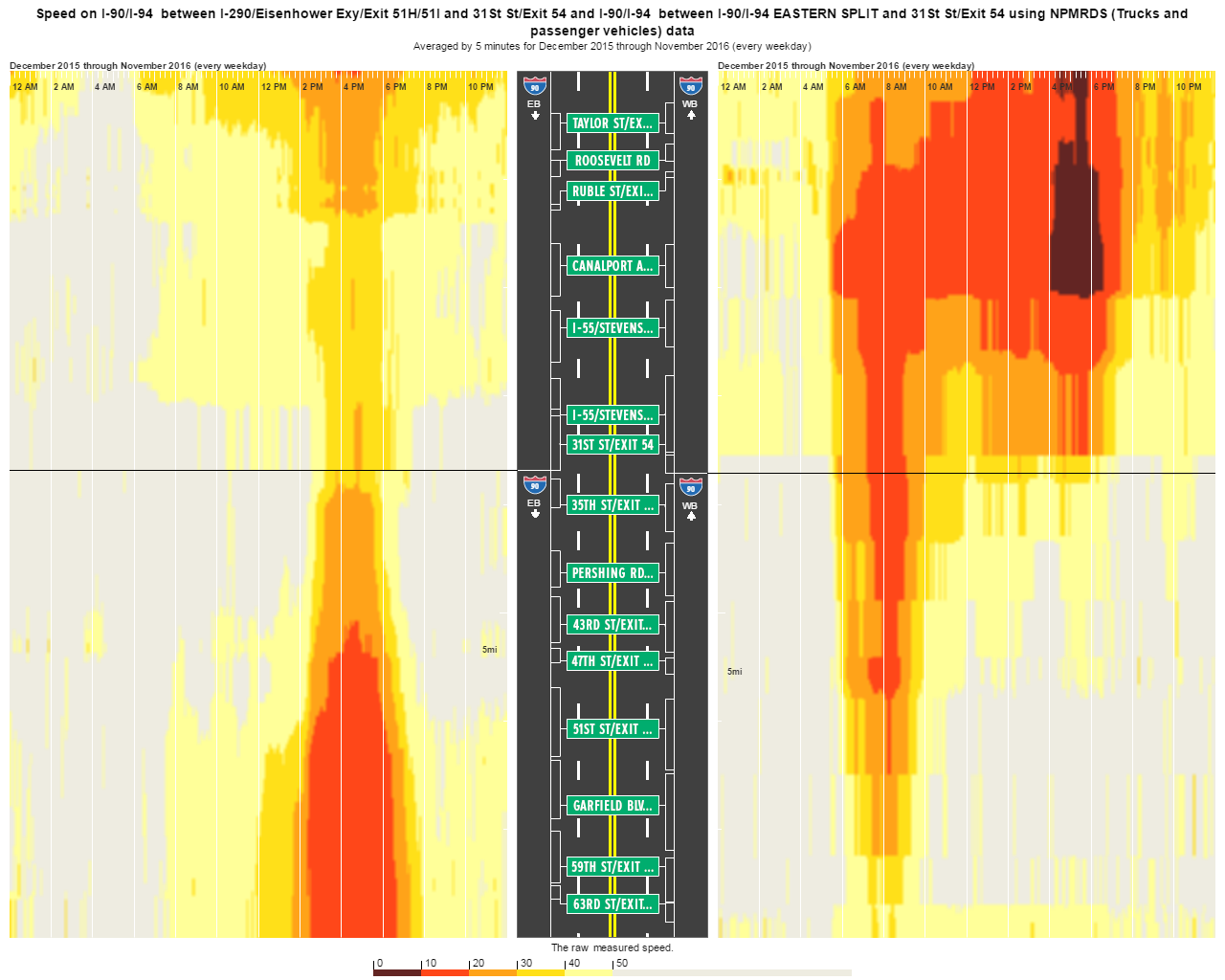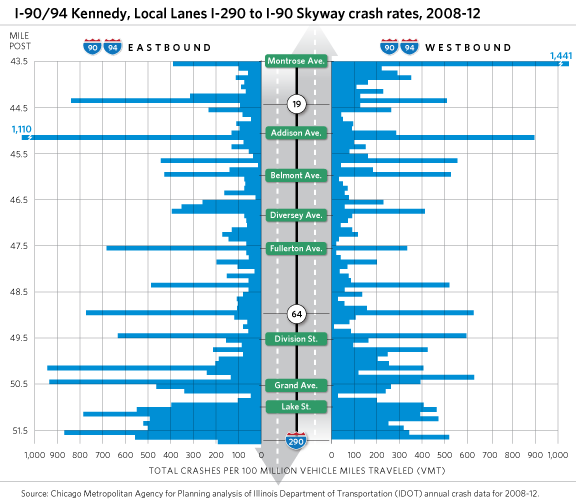The Chicago region traffic congestion scans were created by averaging five minute speed data obtained from freeway loop detectors, radar, and mobile technology data. The traffic scans display average speed on a freeway corridor as a function of time of day (the x-axis) and location (the y-axis) along a freeway corridor. Congestion scans are not available on this section of the Dan Ryan because of data issues. A new source of data is being adapted to provide future congestion scans. This new data source will facilitate congestion scans system-wide, including for the Dan Ryan Expressway.
I-90 94 Dan Ryan Expressway Local Lanes I-290 to I-90 Skyway
Feb 4, 2014
I-90/94 Dan Ryan Expressway (I-290 to I-90 Skyway Local Lanes) Congestion and Crash Scans
Congestion Scan
I-90/94, Dan Ryan Expressway Local Lanes, from I-290 Eisenhower Expressway to I-90 Chicago Skyway. Congestion Scan, 2016. Showing average speed by milepost by time of day by direction of travel.
Note: for best viewing, in Chrome, right-click on the graphic, then open in a new tab. In other browsers, the image may be saved or downloaded as a PDF below.

Download high-resolution PDF (all vehicles, as above)
Download high-resolution PDF (trucks only)
Crash Scan
I90/I94 Kennedy, Local Lanes I-290 to I-90 Skyway Crash Scan, 2008-12. Showing number of crash rates per 100 million vehicle miles traveled.

About the Data
Notice: 2016 congestion scans are based upon work supported by the Federal Highway Administration under contract number DTFH-13-C-00012. Any opinions, findings, and conclusions or recommendations expressed in this publication are those of the author(s) and do not reflect the views of the Federal Highway Administration.
Feb 4, 2014
I-90/94 Dan Ryan Expressway (I-290 to I-90 Skyway Local Lanes) Congestion and Crash Scans
The Chicago region traffic congestion scans were created by averaging five minute speed data obtained from freeway loop detectors, radar, and mobile technology data. The traffic scans display average speed on a freeway corridor as a function of time of day (the x-axis) and location (the y-axis) along a freeway corridor. Congestion scans are not available on this section of the Dan Ryan because of data issues. A new source of data is being adapted to provide future congestion scans. This new data source will facilitate congestion scans system-wide, including for the Dan Ryan Expressway.
Congestion Scan
I-90/94, Dan Ryan Expressway Local Lanes, from I-290 Eisenhower Expressway to I-90 Chicago Skyway. Congestion Scan, 2016. Showing average speed by milepost by time of day by direction of travel.
Note: for best viewing, in Chrome, right-click on the graphic, then open in a new tab. In other browsers, the image may be saved or downloaded as a PDF below.

Download high-resolution PDF (all vehicles, as above)
Download high-resolution PDF (trucks only)
Crash Scan
I90/I94 Kennedy, Local Lanes I-290 to I-90 Skyway Crash Scan, 2008-12. Showing number of crash rates per 100 million vehicle miles traveled.

About the Data
Notice: 2016 congestion scans are based upon work supported by the Federal Highway Administration under contract number DTFH-13-C-00012. Any opinions, findings, and conclusions or recommendations expressed in this publication are those of the author(s) and do not reflect the views of the Federal Highway Administration.